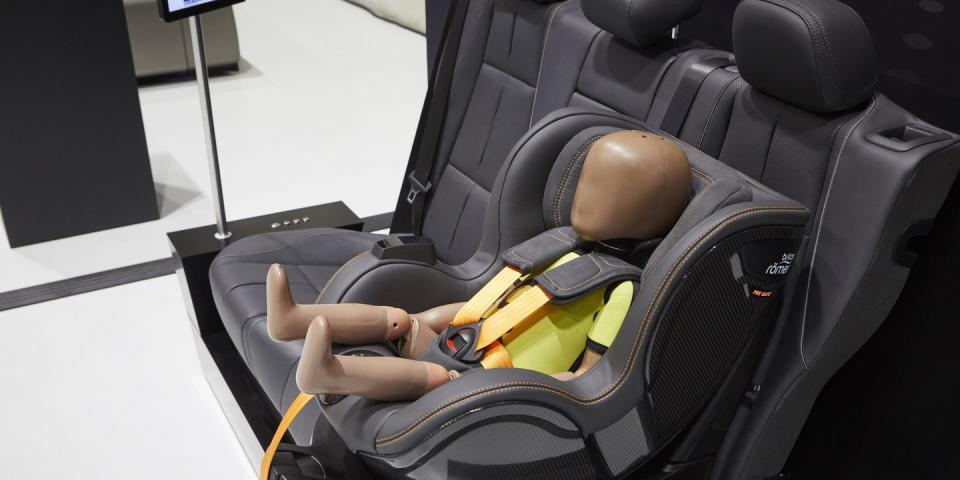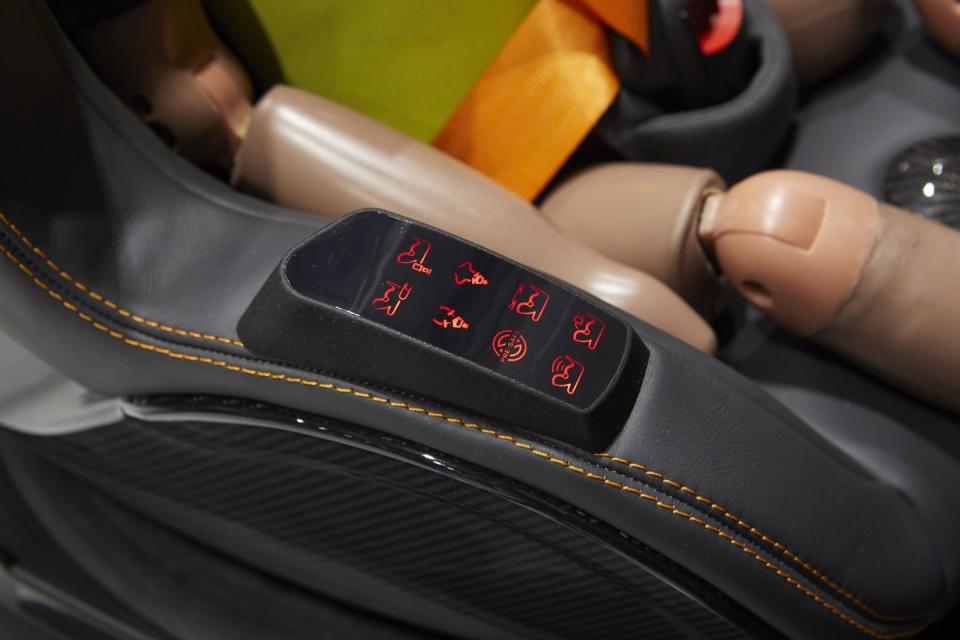Mercedes-Benz's Car Seat Prototype Will Make Children Safer

The Pre-Safe child seat is still just a concept, but one that can communicate in real time with an (also conceptual) Mercedes-Benz vehicle.
Its features include biometric monitoring, self-tightening seatbelts, and smart installation assistance—and that latter feature is something more people need than you might realize.
There are currently no confirmed plans for the Pre-Safe seat to be put into production.
Want to hear a spooky statistic—one spookier if, say, you are of the age where you're still required to be belted into a child seat? Okay, chances are, if you fall into that group, you can't read yet, or use the internet. But your parents or guardians sure can! So listen up: According to Mercedes-Benz, 50 percent of the time child seats aren't properly installed in cars. And many children aren't strapped into their seats as tightly as they could or should be.
Mercedes-Benz's solution is this high-tech, networked Pre-Safe child seat that communicates in real time with the (for now hypothetical) infotainment system in the ESF 2019 safety vehicle concept in which it debuted. To ensure perfect installation, the seat sends feedback to the car, which offers pointers to the user via the dashboard screen, including 3D animations.

It's a bonus that the Pre-Safe child seat also has a swiveling base that makes it easier for parents to load their spawn into a vehicle. Simply shove the seat/carrier through the door the easy way—perpendicular to the opening—and lock it into its base; the parent then can swivel the seat 90 degrees to face backward or forward, as their child's age dictates.
The really clever bit is this: When the seat is swiveled and locked into position, that action winds up a spring attached to the seat's belts. Later, if a crash seems imminent, the seat receives a radio signal from the car that initiates the electronic release of that spring and cinches the child seat's belts tight. It's based on the same concept Mercedes has employed for years in its Pre-Safe function, which tightens the belts in milliseconds before a collision to ensure occupants are properly seated and ready for impact. The same radio signal also pops outriggers from either side of the seat (which are pressed in manually, similar to but not via the same swiveling action that arms the belts). Those can absorb some energy from objects and surfaces around the seat that might impact it in a crash (think of, say, a door panel or armrest in a side impact).
Finally, for those helicopter parents out there who can't stand sitting in the front seats mere inches away from their children in the back seat—or who want to keep tabs on the child who can't be viewed in the rear-facing child seat—the Pre-Safe child seat can beam biometric data via its network connection to the car's main display (again, in theory—all of this tech has only been shown on a concept car for now). Among the things that can be checked are whether or not they're asleep (a supplement to the children's, um, volume that also alerts you to this), their heart rate, breathing, and temperature.
Taken together, these developments are cool and seem doable. Mercedes isn't saying whether or not the Pre-Safe child seat is something it's thinking of putting on sale (it'd be the ultimate Mercedes-Benz accessory, we think), but it'd surely be pricey. But can you put a price on your child's safety?
You Might Also Like

 Yahoo Autos
Yahoo Autos 